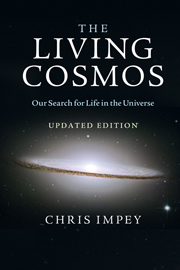6 - DISTANT WORLDS
Published online by Cambridge University Press: 05 August 2011
Summary
A sad spectacle. If they be inhabited, what a scope for misery and folly. If they not be inhabited, what a waste of space.
–Thomas Carlyle (1795–1881), on the plurality of worldsThe year is 2067. Earth has survived, its environment battered and bruised, and humans have muddled through, their few shining moments eclipsed by tribal squabbles over resources and religion. Many diseases have been conquered, but others have risen to take their places. The evolutionary struggle between men and microbes is at a stalemate. In an era of quantum computing, bodies of people in the western world are patrolled and retooled by medical microbots. Embedded intelligent agents ceaselessly draw on the vast web of information that permeates the air.
It was one hundred years into the space age before humans cracked the problem of interstellar travel. Fusion drives now power all major commercial aircraft, and larger craft service tourism and mining outposts throughout the Solar System. Astronomers have honed their techniques and routinely detect terrestrial planets as small as Mercury. Robot emissaries traveling at half light speed have fanned out to hundreds of the nearest stars, and a few Earth “cousins” are known.
Twenty years earlier, in 2047, one hundred people set out on a momentous journey. Fueled by the same urge that sent humans migrating across continents tens of thousands of years before, and demoralized by the loss of vision and the spiritual decay on Earth, they were the first to cut the umbilical cord and attempt to homestead a new planet.
- Type
- Chapter
- Information
- The Living CosmosOur Search for Life in the Universe, pp. 222 - 263Publisher: Cambridge University PressPrint publication year: 2011

